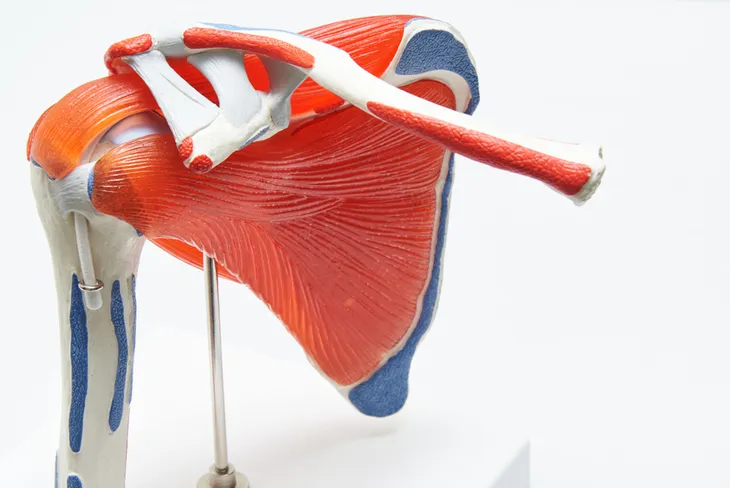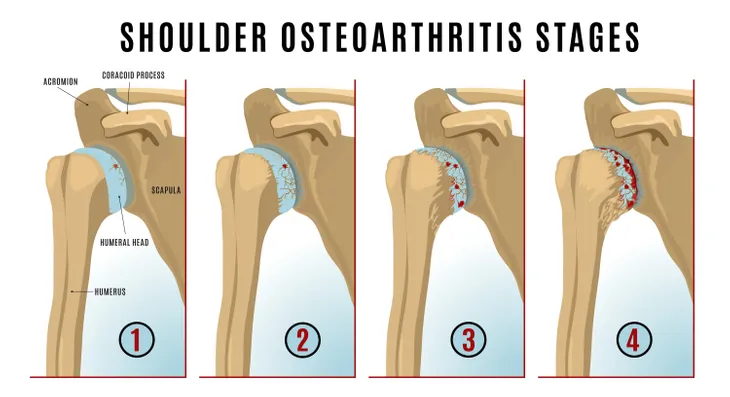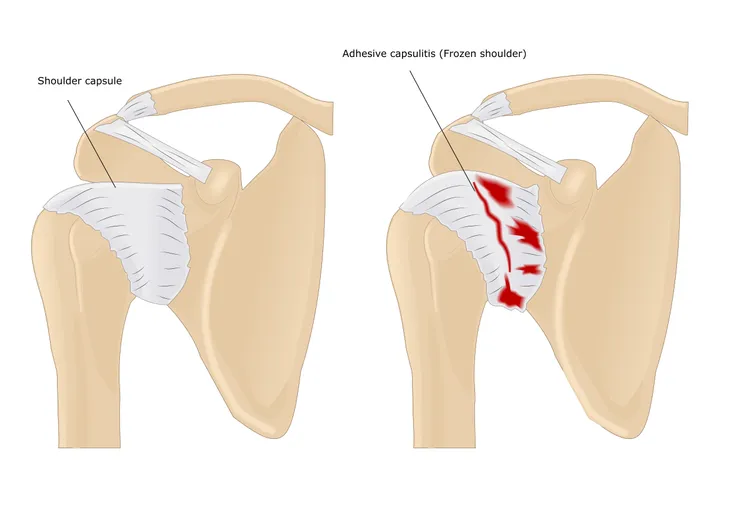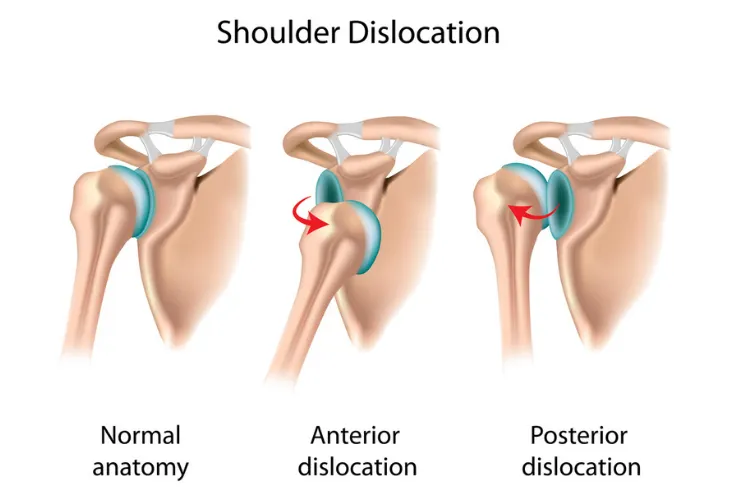The shoulder is a magical thing. It’s versatile, rugged, precise, and powerful. It allows us the ability to perform daily tasks, even those as mundane as brushing our teeth, holding a child, and picking up an object. Unfortunately, because we use it so much, it’s often prone to injury or pain. Whether it’s an old volleyball injury or a buildup of arthritis, most people have experienced shoulder pain.
Today, we’re going to add some positivity to the greater dialogue surrounding shoulder-joints. Mostly though, we’re going to take a look at the causes behind that creaky shoulder and offer up some remedies and preventative to-dos.
What to Know About Your Shoulder
According to Medical News Today, the shoulder joint isn’t the most complex joint in the body (the knee owns that designation), but this curious combination of bones, tendons, and muscles is certainly unique. For starters, the shoulder is one of the only joints in the body without a socket, or much of any “bony connection” at all.
It is the most mobile joint in your body and it relies heavily on the eight stabilizing muscles that surround it. But all of that mobility sure can create a lot of problems. Especially when mixed with poor form, repetitive motions, or a lack of rest. The 8-million annual, shoulder-related MD visits represent a cacophony of injuries, stresses and restrictions.
Torn Cartilage
Cartilage is the connective tissue found on the ends of the bones that make up the free-moving joints of your skeleton. And, though it is relatively rugged it’s far from indestructible.
Sometimes injuries can lead to a tear in the cartilage surrounding the rim of the shoulder joint. There’s no one-type of injury that’s likelier to cause a cartilage tear. Repetitive motions, falls, and direct impacts can all cause a tear. Symptoms include pain at the joint, a catching sensation when moving the shoulder, swelling, or localized discomfort.
Arthritis
Suffering from stiffness and pain? It could be arthritis. No joint is safe from this debilitating condition, and that includes your shoulder.
Osteoarthritis and rheumatoid arthritis are the two most common types. Very briefly, osteoarthritis causes the cartilage of the suffering joint to break down, while rheumatoid arthritis is an immune system disease that specifically targets the lining of your joints. Both are bad news.
Torn Rotator Cuff
The rotator cuff is a foundational building block of the shoulder that’s made up of muscles and tendons. Not only does it insulate the shoulder from injury, but it also allows us to lift our arms over the head. I’d say that’s pretty important.
It’s a heavily used soft tissue and it assumes a lot of risk for injury. You can tear it through long-term, repetitive use, but can also sustain a localized injury too. A torn rotator cuff may limit a shoulder’s ability to lift things, or cause a crackling sound when moved.
Bursitis
Cartilage isn’t the only thing cushioning the muscles, there are also tendons and bones that surround the shoulder joint. Bursae, or bursa sacs, are small, fluid-filled sacs that serve a critical role in the day-to-day functionality of our hip, knee, and shoulder joints.
Bursitis happens when those sacs become inflamed due to repetitive motion or trauma. Bursitis can cause stiffness and swelling in the affected area, and may be painful to the touch.
Bone Spurs
Joint damage from osteoarthritis can lead to the formation of bony projections where the bones meet each other. Those are called bone spurs and they can lead to debilitating pain in some cases.
Bone spurs can develop for years without any symptoms and without any need for treatment, but in the most severe cases they can reduce your range of motion and cause significant pain and swelling.
Frozen Shoulder
Frozen shoulder has nothing to do with the temperature and everything to do with a lack of mobility.
Your upper arm bone, shoulder blade, and collarbone connect to make up the foundation of what we refer to as our shoulder. But as we’ve already established, there’s so much more to this complicated joint than that! Surrounding all of those bones is an envelope of tissue that’s often referred to as the shoulder capsule.
Sometimes, for a variety of different reasons, that shoulder capsule can become tighter over time. And sometimes still, the shoulder capsule can become so tight that it locks up altogether. The result is referred to as frozen shoulder, and it can last anywhere between 6 to 9 months. Don’t worry though, your range of motion does tend to return eventually.
Dislocation
A dislocation can happen if your shoulder is pulled the wrong way or rotated awkwardly enough to allow the top part of your arm to pop out of the socket that’s holding it in place.
Your shoulder doesn’t necessarily have to be fully dislocated to feel the pain either. A slight slippage, or subluxation, can be painful and can often reoccur in the same joint. Either way, you’ll want to make a visiting a doctor priority number one.
Remedy: Ice
Whether it’s a cold compress, an ice pack, or one of these sports-centric recovery sleeves, icing is a great way to ease any pain associated with a shoulder injury.
Ice is most effectively applied to an inflamed area in the 48-hours following an injury or aggravation. In order to maximize its impact, apply the ice to your shoulder for no longer than 20-minutes at a time, with at least 45-minutes in between applications.
Remedy: Medications
Some pain is just too much for ice alone. That’s where medication comes into play. Nonsteroidal anti-inflammatory drugs like ibuprofen, aspirin, or naproxen already fill most people’s medicine cabinets. You can often find these at a local pharmacy, so be sure to lean on them should your pain become unbearable.
A visit to your doctor could land you a prescription for something stronger. Prescription pain relievers, steroid injections, and steroid drugs can all help alleviate the symptoms of an injured shoulder.
Remedy: Supports
Additional supports for a sore shoulder are just as readily available as ibuprofen and aspirin. Wrapping a swollen shoulder with an elastic medical bandage does help relieve pain and reduce swelling.
A shoulder sling is a great way to limit any movement in the shoulder and prevent further damage. Though a sling can take a lot of the thinking out of resting an injured shoulder, it only works if it’s properly adjusted! So make sure your sling isn’t too tight, too loose, or that your arm isn’t hanging too low.
Remedy: Occupational Therapy
Sometimes occupational therapy is the only non-surgical way to alleviate shoulder pain or recover from any long-term injury.
The exercises, stretches, and massage techniques that an occupational therapist uses is entirely dependent on the injury being treated, but the pros typically rely on a combination of loosening tight muscles and strengthening weak ones to ease discomfort and strengthen weak, injury-prone muscles.
Take Your Time
Recovering from an injury or navigating a life with shoulder pain can be incredibly frustrating. Sometimes it can be hard to take the time to rest and recover. It’s incredibly easy to revert back to lifting heavy things because it’s easier than putting in the rest. However, it’s recovery is necessary for healing.
You should also be proactive with any injuries by doing yoga, exercise with resistance bands, and stretching regularly. You should also visit a doctor if experiencing any pain.
















